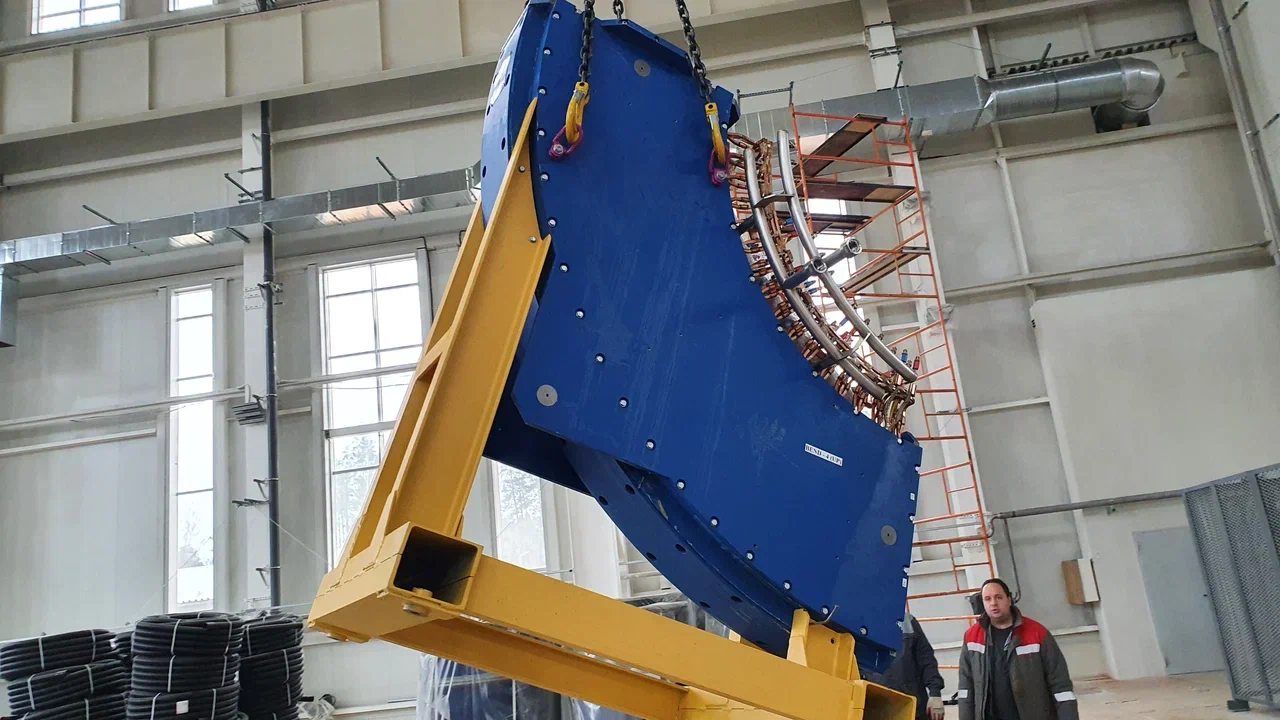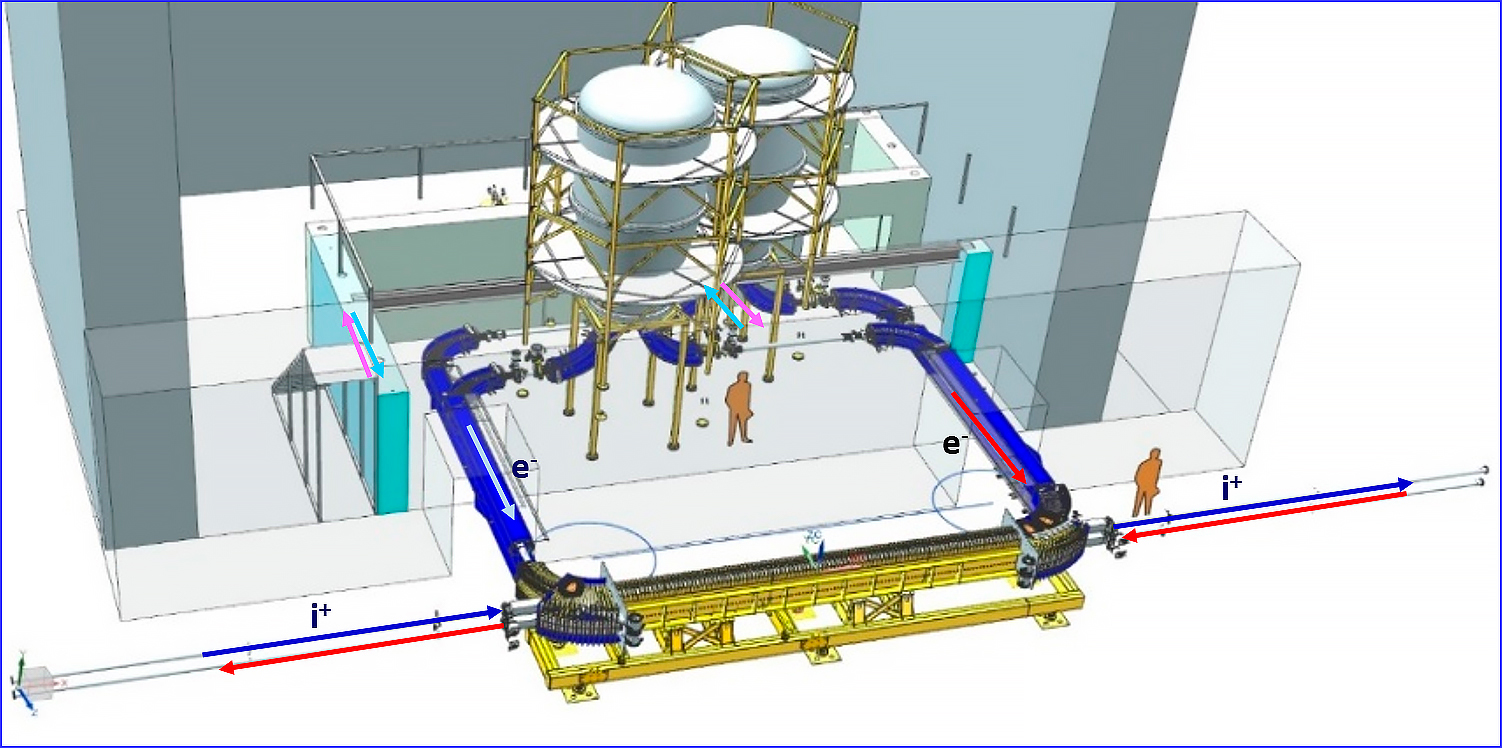NICA Collider received first elements for electron cooling system
News, 14 November 2022
First elements of electron cooling system (ECS) of the NICA Collider, which will provide its high luminosity in future, arrived at Dubna last week.
A hometown of the method is Budker Institute of Nuclear Physics of SB RAS in Novosibirsk, where the precious cargo came from. Specialists will install two such systems at the NICA Collider, for both of its rings. ECS is quite a huge installation, it will reach high-energy electrons, up to 2,5 MeV.
Specialists used the ECS scheme and cooling method, proposed and implemented in 1967 at the INP of SB RAS, more than in 15 synchrotrons around the world. The ECS electron beam is introduced into a part of the collider orbit, travels simultaneously with the ion beam in the collider ring, and then extracts into the collector (electron receiver). During the joint journey, cold electrons take away excess kinetic energy from ions rotating in the collider. As a result, the transverse velocity and the scatter of the longitudinal velocity of ions decrease. This is the cooling effect. Focusing system of the collider contracts ion beams due to a drop of their velocity and the beam size decreases. It ensures a greater number of ion collisions per one flight through the beams meeting area, a number of events per unit time increases, the so-called luminosity, the main characteristic of any collider.
This time JINR received ECS tank, which houses a high-voltage system for 2,5 million volts. “This is quite an enormous installation. Only the tank weighs 7 tons and has a height of 5,1 metres. That is why VBLHEP specialists under the guidance of Anton Sergeev faced the difficult task to unload the tank, and they successfully coped with it,” one of the authors of the electron cooling method, Scientific Leader of the NICA Accelerator Complex, RAS Academician Igor Meshkov noted. “The tank’s size is determined by the need to provide gaps, which will withstand high voltage between its walls and elements of electrostatic linear electron accelerator, placed inside it.”
Two ECS elements were sent with the same transport. They are solenoids, creating longitudinal magnetic field, in which electron beam is formed and transported. Besides, the magnetic field significantly improves the quality of the electron beam and allows reducing the transverse electron velocity, which increases the efficiency of cooling. The geometry of ECS facilities is quite complex. Solenoids, which are curved on a part of the electron beam trajectory outside the tank and have the shape of a torus segment, create the magnetic field inside and outside the tank. Such a toroidal coil leads electrons to a straight section of the ion trajectory of the collider. This is the cooling area.
 Toroidal solenoid on the screen
Toroidal solenoid on the screen
“This is only 5-10 percent of all the ECS equipment that we wait for from Novosibirsk. In total, we expect eight vehicles with the system’s elements,” Igor Meshkov said. “Almost all the equipment is ready and tested by colleagues from the INP SB RAS. We plan to install ECS elements as they arrive in Dubna.”
It is worth mentioning that this is the second electron cooling system. The first facility for a lower electron energy, 50 keV, which is 50 times less than for the collider’s ECS, has also been produced at the INP and has already been working at the Booster. The INP group under the supervision of Academician V. V. Parkhomchuk and his student V. B. Reva developed and built all the three ECSs for the Booster and the Collider. Both of them are well-known among specialists in the cooling of ion and antiproton beams.


